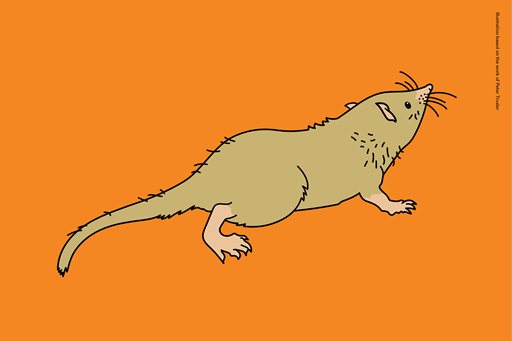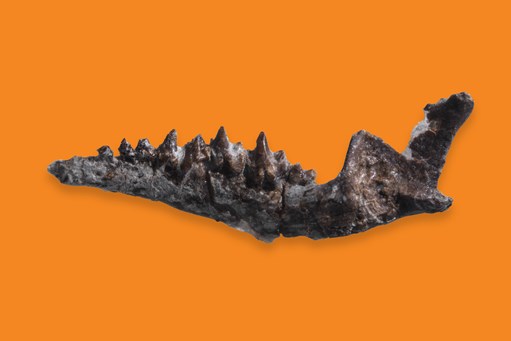3. Bishops whitmorei
Tiny mammal among Victoria’s dinosaurs
When the polar dinosaurs roamed Victoria 130 million years ago, this tiny mammal also thrived in the cool Gondwanan forests. Its teeth and jaws are only a few millimetres long. They were found fossilised in ancient riverbeds, along the modern coastline. It took keen eyes to spot them, and painstaking skill to free them from the rock. In life, it was likely an insect-eater, and looked much like today’s shrews or antechinuses.
Similarly aged mammals in Australia include the ancestors of the platypus and echidna. But exactly where Bishops sits in the mammal family tree is controversial: it might be related to the platypus and echidna or could be a vanished branch of placental mammals — the group that now includes cats, dogs and human beings.
About the animal
|
Scientific name |
Bishops whitmorei |
|
How do you say its name? |
Bish-ops whit-MORE-eye |
|
How big? |
Five centimetres long |
|
When did it live? |
130 million years ago |
|
What did it eat? |
Insects |
Fossil facts
|
Significant Victorian location |
Inverloch, South Gippsland |
|
Traditional Owners |
|
|
Who found it? |
Volunteer ‘dinosaur diggers’ Katch Bacheller and Norman Gardiner |
|
Who described and named the fossil? |
Senior Curator of Vertebrate Palaeontology at Museums Victoria, Dr Thomas Rich |
|
What is special about it? |
Bishops lived among dinosaurs when the Australian continent was near the South Pole. |
|
Significance of the fossil |
Bishops is unique to Victoria. |
|
Full name and meaning |
Named for Drs Barry Bishop and Frank Whitmore, of the National Geographic Society, who supported the fossil digs where Bishops was found. |








